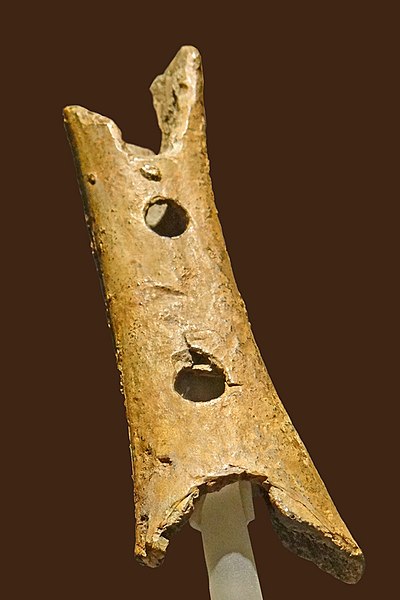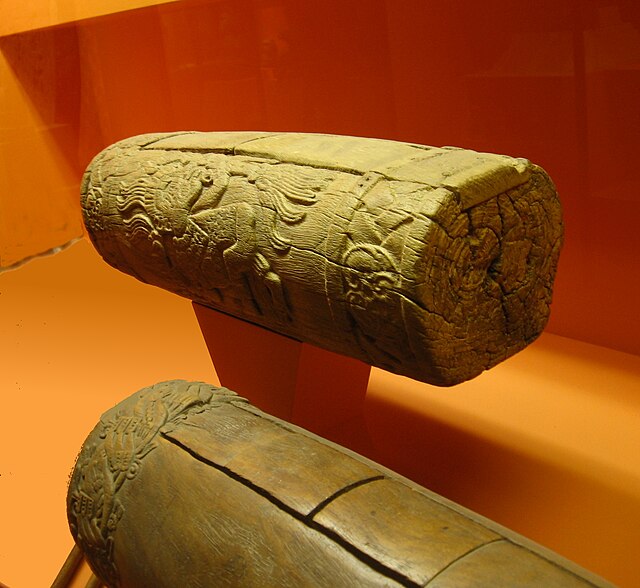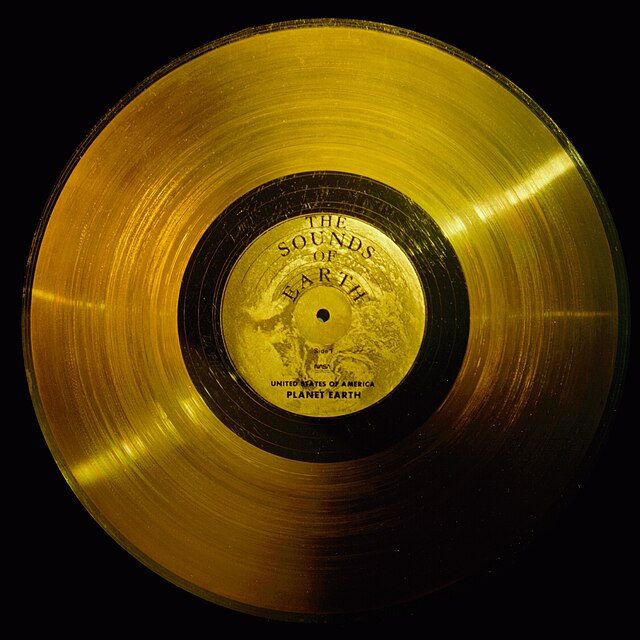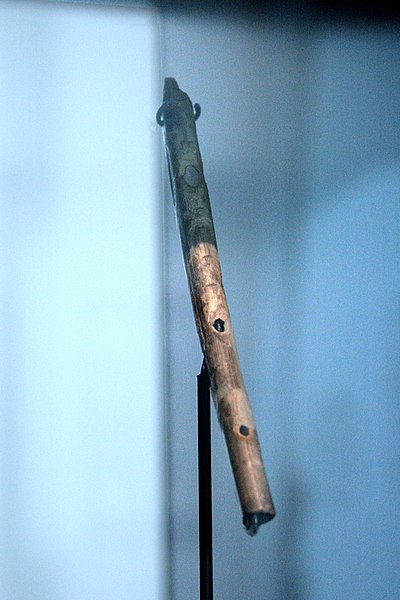A musical instrument is a device created or adapted to make musical sounds. In principle, any object that produces sound can be considered a musical instrument—it is through purpose that the object becomes a musical instrument. A person who plays a musical instrument is known as an instrumentalist. The history of musical instruments dates to the beginnings of human culture. Early musical instruments may have been used for rituals, such as a horn to signal success on the hunt, or a drum in a religious ceremony. Cultures eventually developed composition and performance of melodies for entertainment. Musical instruments evolved in step with changing applications and technologies.
Anne Vallayer-Coster, Attributes of Music, 1770. This still life painting depicts a variety of French Baroque musical instruments, such as a natural horn, transverse flute, musette, pardessus de viole, and lute.
Bamileke slit drum drummers in Cameroon's West Province.
Found in Slovenia, the Divje Babe Flute is sometimes considered the world's oldest known musical instrument
Two Aztec slit drums (teponaztli). The characteristic "H" slits can be seen on the top of the drum in the foreground.
Music is the arrangement of sound to create some combination of form, harmony, melody, rhythm, or otherwise expressive content. However, definitions of music vary depending on culture, though it is an aspect of all human societies and a cultural universal. While scholars agree that music is defined by a few specific elements, there is no consensus on their precise definitions. The creation of music is commonly divided into musical composition, musical improvisation, and musical performance, though the topic itself extends into academic disciplines, criticism, philosophy, psychology, and therapeutic contexts. Music may be performed using a vast range of instruments, including the human voice to sing, and thus is often credited for its extreme versatility and opportunity for creativity.
Grooved side of the Voyager Golden Record launched along the Voyager probes to space, which feature music from around the world
In Greek mythology, the nine Muses were the inspiration for many creative endeavors, including the arts, and eventually became closely aligned with music specifically.
Bone flute from Geissenklösterle, Germany, dated around c. 43,150–39,370 BP.
Indian women dressed in regional attire playing a variety of musical instruments popular in different parts of India








